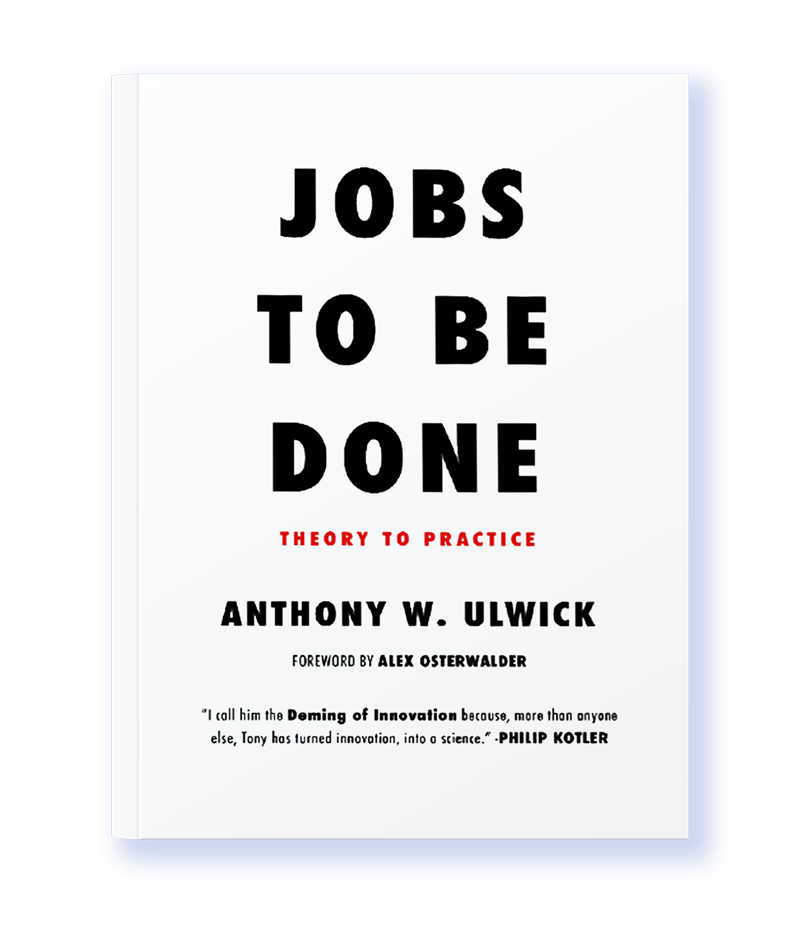
Product and marketing functions have specific roles to play in creating and communicating solutions to the market. Executives have the broader—and often more challenging— responsibility of keeping the entire business focused on achieving growth objectives.
Thankfully, looking at your business through the lens of Jobs-to-be-Done offers can help you solve for many of your most pressing challenges, such as:
Companies are organized into functions, each optimized to serve a particular purpose. Sales, marketing, product development, R&D—they all have different goals, rely on different inputs to achieve those goals, and each has its own language for communicating how to create customer value.
For example:
Because each function has its own way of defining what value means for the customer, companies struggle to align around customer problems and solutions to these problems.
But when you view your business through the lens of Jobs-to-be-Done, you can align your organization around its purpose, which is to help people get a job done.
Breaking down the job map aligns the organization around the steps the customer goes through to get that job done. This allows your siloed teams to all view value creation—and communication—through the eyes of the customer
Coloplast offers a prime example.
Their team was struggling to gain traction in the market, thanks to a lack of agreement between sales, marketing, and product development as to what they should create and communicate next in their line of wound care products.
We already mentioned how understanding their customer’s job helped Coloplast’s marketers make impactful changes to their value proposition and messaging.
This simple alignment changed the trajectory of the firm for the long-term.
But understanding their customer’s job and job map also helped the sales team to create new sales materials that pointed out exactly how their solutions addressed customer needs. The product development team knew exactly what products and features to create next in order to reinforce that new value proposition.
Download your free copy of Tony Ulwick’s book Jobs-to-be-Done: Theory to Practice.

Most executives would claim that their businesses are customer-centric—but how many of them actually are?
Most teams rely on an internally-focused approach to innovation and growth. Teams ideate around new technologies and solutions, creating prototypes, and testing them out to see how customers respond.
This is not customer-centricity.
It’s solution-centricity.
Using Jobs-to-be-Done is a paradigm shift, helping the business to adopt an outside-in mindset that’s guided by the voice of the customer. It realigns the organization to believe that they should understand the external customer’s needs first and then work to solve them—rather than focusing internally and ideatnig around technology and solutions.
This is real customer-centricity.
By understanding the job map, your teams can focus on what will actually help the customer get the job done better—then go create and market these things. No failing fast necessary.
Understanding your customer’s job-to-be-done and job map offers a long-term focal point around which to create value. You may remember from Chapter 1: What is Jobs-to-be-Done, technologies and solutions change with time, but jobs remain stable over time.
Your goal for the foreseeable future is to help your customers get their job done better and cheaper.
This allows you to create long-term strategies against a stable unit of measure —a North Star to guide the business.
Jeff Bezos took this approach with building Amazon into the behemoth it is today. When he started the company two decades ago, he made it his mission to continually improve the consumer’s buying experience—to make it better and better over time. And that’s exactly what he has done. Amazon has created a platform that allows people to quickly and easily buy just about any product they could imagine, and the platform serves as the market standard for the type of buying experience consumers now expect.
The beauty of this approach is that there’s no endpoint at which you have to scrap everything and come up with a new strategy. Once you have a clear understanding of your customer’s entire job, you can make it your organization’s mission to help people get that job done better and more cheaply—over decades.
Just like Amazon continues to do.
In addition to adding value by helping your customer get the job done better and more cheaply, understanding the customer’s job and job map also allows you to get more of the job done over time.
For many jobs, customers cobble together a variety of solutions to get through each job step—but in nearly every case, they’d prefer a single solution for the entire job.
When you visualize the entire job through the job map, it allows you to see:
This is exactly the insight you need to determine how to become the solution-of-choice by helping your customer get the entire job done. Do you have a product with potential to get more of the job done? Focus on building this solution to address more job steps. On the other hand, if you have a solution that will never be able to address more of the job, it may be time to deprioritize investment.
Consider the example of Cox Automotive.
The brand’s Auto division offers auto dealers SaaS solutions to better manage their inventory. They had been highly successful in the past, but they were no longer seeing the gains they needed to continue to grow market share. By getting a clear view of the customer’s entire job, Cox Automotive identified significant gaps in the job map—and worked to fill them.
"Jobs-to-be-Done helped us understand that our product was poorly positioned and failed to get important parts of the job done. They helped us identify and fill the gaps, which we accomplished with targeted development and M&A activity. The project had a significant financial impact to the business."
– RANDY KOBAT, COX AUTOMOTIVE
VP & GENERAL MANAGER
In the same way Jobs-to-be-Done helps you identify holes in your own portfolio, it can help do the same thing for your competition.
There may be other brands that only get a few job steps done today. They don’t overlap with your job steps, so you don’t consider them a competitor.
But perhaps they’re building their solution in a way that allows them to eventually get the entire job done on that single platform. You need to know this well in advance.
They’re not a traditional competitor creating products that do what you do—but they are creating products that are helping customers get the entire job done. In the long-term, they will be a threat.
Copyright ©2024 Strategyn LLC. All Rights Reserved. | XML Sitemap | HTML Sitemap